How Much Chicken and Rice to Feed Your Puppy: A Clear and Confident Guide
Puppies are bundles of energy, and their growing bodies need the right fuel. One popular choice among pet parents is a diet based on chicken and rice. It’s simple and nutritious, and most puppies find it irresistible. But how much should you feed your puppy?
Chicken and rice are more than just tasty. They’re packed with nutrients essential for your puppy’s growth. Chicken is a lean protein, providing the building blocks for muscle development. It’s also rich in Omega 6 fatty acids, promoting healthy skin and coat. Rice, on the other hand, is a great source of carbohydrates, providing energy for your playful pup.
Chicken and rice are easy to digest, making this a go-to meal for a pup with an upset tummy. However, chicken and rice alone don’t provide a balanced long-term diet for your growing dog.

How Much Chicken and Rice to Feed Your Puppy?
Generally, puppies need between 25 and 30 calories per day per pound of their body weight. A chicken and rice meal typically contains between 350 and 400 calories per cup. So, a 10-pound puppy would need roughly three-quarters of a cup of chicken and rice per day. This diet should be temporary, usually three to four days, or until symptoms disappear. If you’re using chicken and rice as an add-in, a good starting point could be replacing a quarter of their regular food with an equal volume of chicken and rice.
Here’s what you need to know about how much chicken and rice to feed a puppy, how long to feed this diet, and how to choose a long-term healthy diet based on chicken and rice.
Want a high-quality fresh food for your puppy based on chicken and rice that they can eat all the time? Nom Nom is a superb option for fresh dog food because a veterinary nutrition expert formulates it.
Is your puppy ready for a grown-up diet? Here’s how to transition from puppy food to adult food.
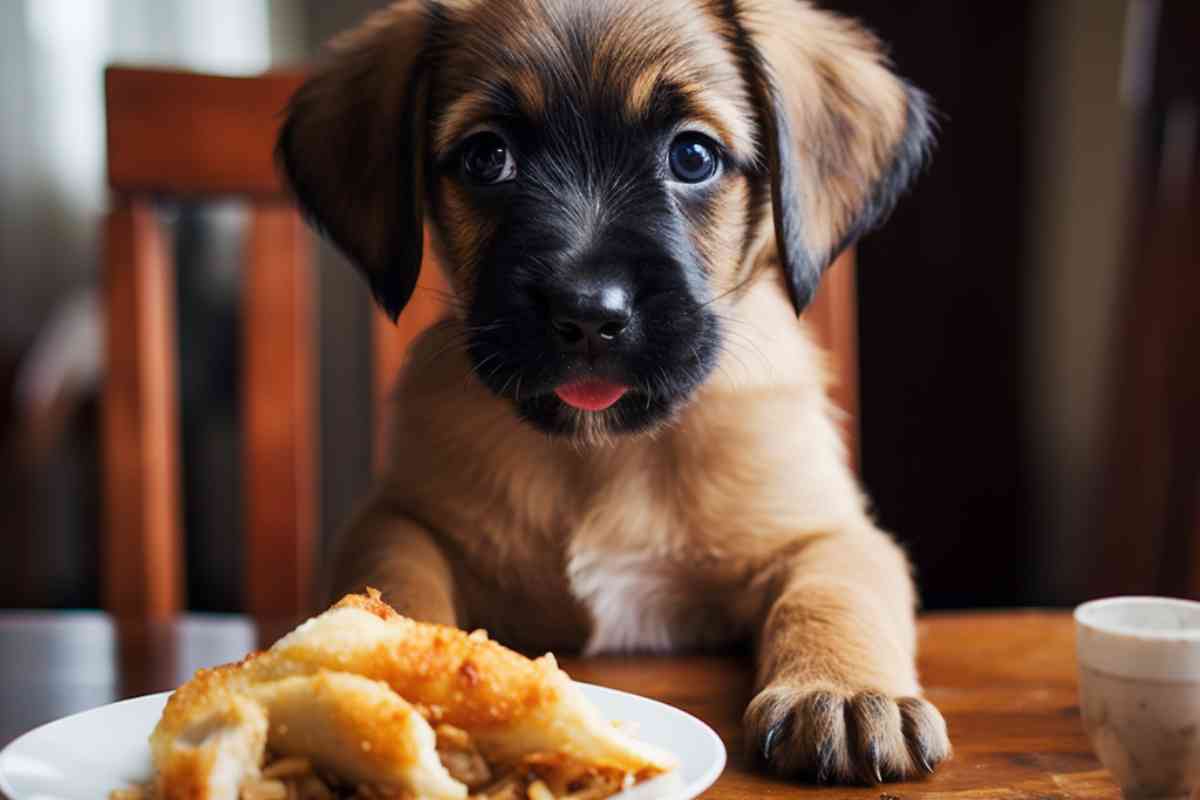
Key Takeaways
- Chicken and rice are packed with nutrients essential for a puppy’s growth. Chicken provides lean protein and Omega 6 fatty acids, while rice is a great source of carbohydrates.
- Chicken and rice are easy to digest, making them perfect for puppies with sensitive stomachs. Vets often recommend this diet for puppies suffering from diarrhea or vomiting.
- Preparation of the chicken and rice meal is simple: boil boneless, skinless chicken breasts and white rice, then mix together at a ratio of one-to-two. Cool the meal completely before serving it to your puppy.
- The amount to feed your puppy depends on their weight. As a general rule, puppies need between 25 and 30 calories per day per pound of their body weight. Most chicken and rice meals contain between 350 and 400 calories per cup.
- A chicken and rice diet should be temporary. It doesn’t contain all the nutrients your puppy needs for a balanced diet. After a few days, or when your puppy’s stomach upset has resolved, start transitioning back to their regular food.
- Chicken and rice isn’t just for sick puppies. It’s a tasty addition to any puppy’s diet. If your puppy is a picky eater, mixing in some chicken and rice with their regular food might just do the trick.
- Always consult with your vet before making significant changes to your puppy’s diet. Your puppy’s health and wellbeing are worth it.
How Much Chicken and Rice to Feed Your Puppy
The amount to feed your puppy depends on their weight. As a general rule, puppies need between 25 and 30 calories per day per pound of their body weight. Most chicken and rice meals contain between 350 and 400 calories per cup. So, for example, a 10-pound puppy would need between 250 and 300 calories per day, which equates to roughly three-quarters of a cup of chicken and rice.

It’s important to remember that these are general guidelines and individual puppies may have different nutritional needs. Factors such as age, breed, activity level, and overall health can affect how much your puppy should eat. Always consult with your vet to determine the appropriate amount of food for your puppy.
Why Feed a Puppy Chicken and Rice?
Chicken and rice are easy to digest, making them perfect for puppies with sensitive stomachs. Vets often recommend this diet for puppies suffering from diarrhea or vomiting. It’s also a good choice for an elimination diet to detect allergies or sensitivities.
For instance, if your puppy has been experiencing digestive issues, such as loose stools or vomiting, a vet may recommend a temporary switch to a chicken and rice diet. This diet is bland and easy on the stomach, allowing your puppy’s digestive system to recover.
The Role of Chicken and Rice in Puppy Diet
Chicken and rice are more than just tasty. They’re packed with nutrients essential for your puppy’s growth. Chicken is a lean protein, providing the building blocks for muscle development. It’s also rich in Omega 6 fatty acids, promoting a healthy skin and coat.
Chicken has a complete amino acid profile, which is beneficial for tissue repair throughout the body. It’s also packed with essential nutrients and is not very calorie-dense, making it a healthy staple in a puppy’s diet.
Rice, on the other hand, is a great source of carbohydrates, providing energy for your playful pup. It’s also a source of vitamin D, fiber, and iron. It’s gluten-free, making it a good carbohydrate alternative for puppies with gluten sensitivity or intolerance. However, it should not be fed in high amounts daily due to potential arsenic levels.
Here is a table that illustrates the nutritional value of chicken and rice:
| Nutrient | Chicken (100g) | White Rice (100g) |
|---|---|---|
| Protein | 31g | 2.7g |
| Carbohydrates | 0g | 28.7g |
| Fiber | 0g | 0.4g |
| Vitamins | B6, B12, D | Thiamin, Niacin, Vitamin B6 |
| Minerals | Iron, Zinc, Phosphorus | Iron, Magnesium, Phosphorus |
As you can see, chicken and rice provide a combination of protein, carbohydrates, vitamins, and minerals that are essential for your puppy’s health and well-being. However, chicken and rice isn’t a complete diet for puppies or dogs.
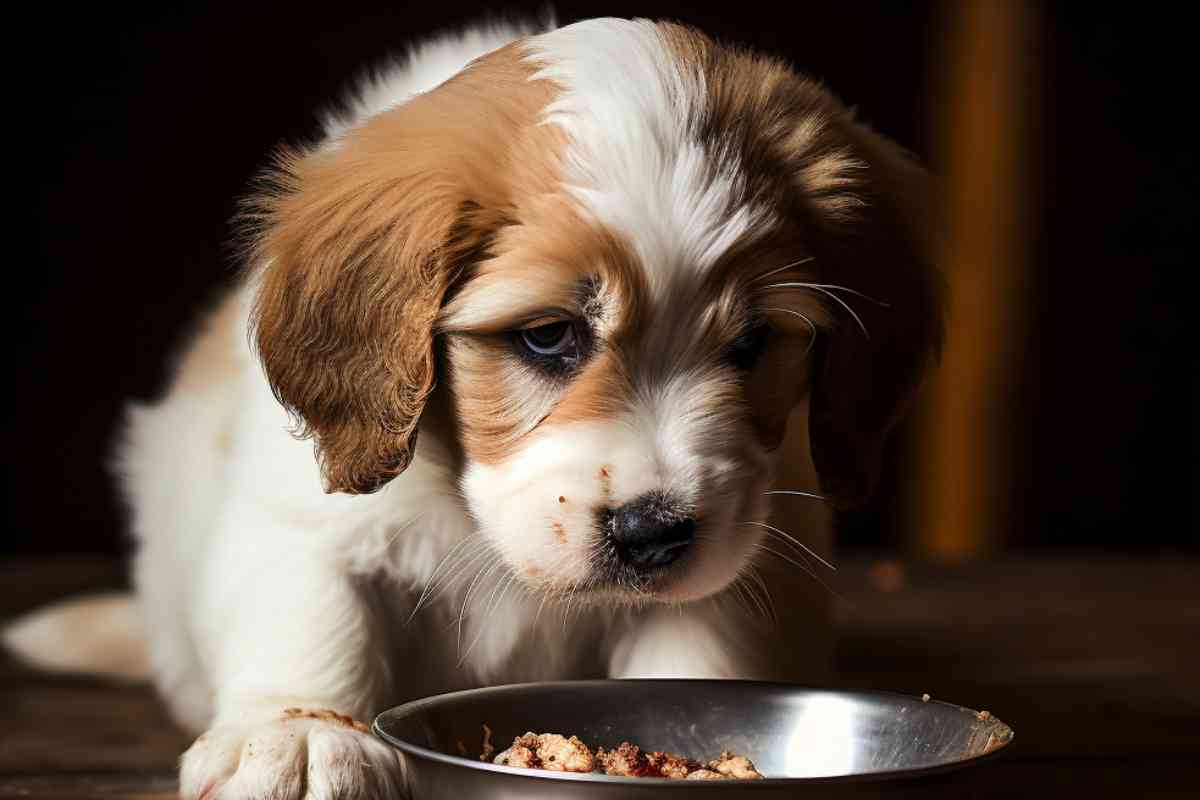
Choosing the Right Ingredients
When it comes to feeding your puppy, choosing the right ingredients is crucial for their health and well-being. Chicken and rice are a great option for a homemade meal, but it’s important to choose the right type of chicken and rice. Here are some tips to help you choose the right ingredients for your puppy’s meal:
Chicken
When selecting chicken, it’s important to choose boneless and skinless chicken. The skin and bones can be difficult for your puppy to digest and can cause digestive issues. Additionally, skin can contain a lot of fat, which can be harmful to your puppy’s health. You can use either white or brown rice to mix with the chicken.
Rice
White rice is a good option for puppies with sensitive stomachs, as it is easy to digest. Brown rice is a good source of fiber and nutrients, but it takes longer to cook and can be harder to digest. It’s important to cook the rice thoroughly to make it easier for your puppy to digest.
Water
When cooking chicken and rice for your puppy, it’s important to use enough water to ensure that the rice is fully cooked and that the chicken is moist. The ratio of water to rice should be 2:1.
To summarize, boneless and skinless chicken and either white or brown rice are good choices for your puppy’s homemade meal. Thoroughly cooking the rice and using enough water to keep the chicken moist are also important factors to consider.
Related Posts:
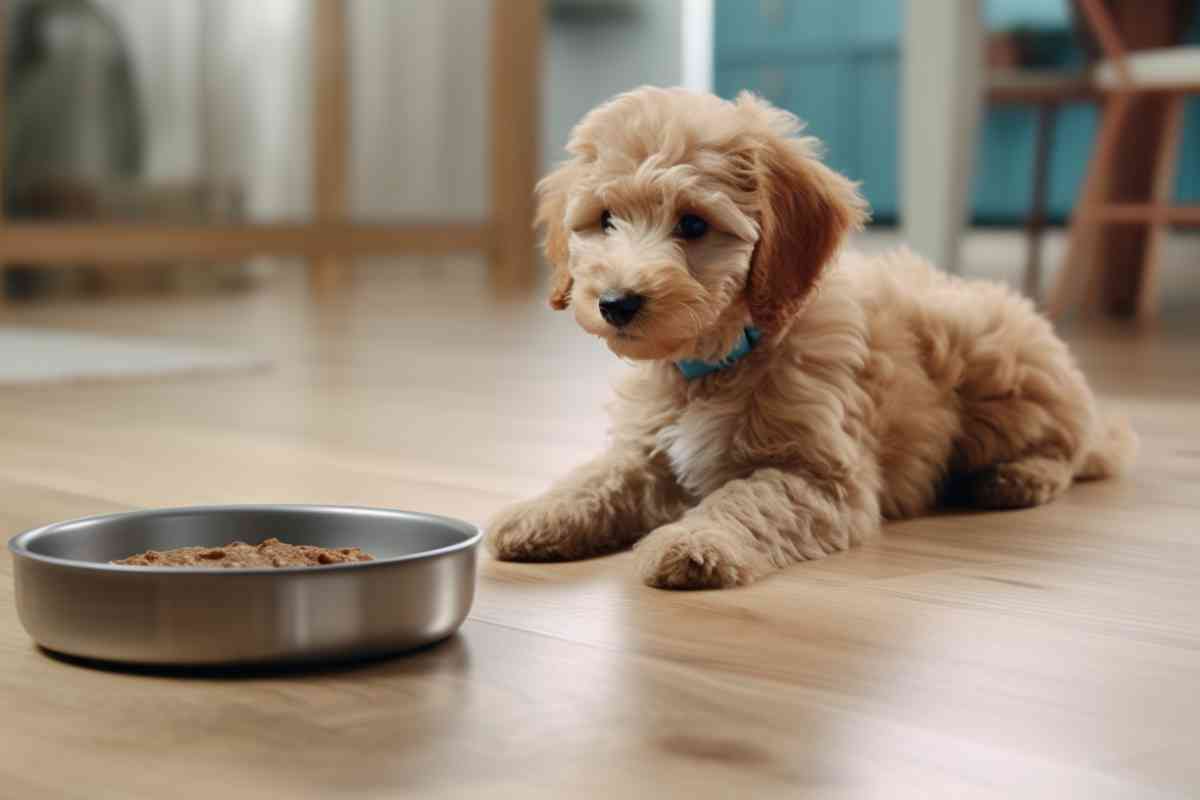
Preparing Homemade Chicken and Rice for Puppies
Preparation is key. Boil boneless, skinless chicken breasts until cooked through, then cut into small, puppy-friendly pieces. Boil white rice as normal, without any seasonings, oils, or butter. Mix the chicken and rice together at a ratio of one-to-two. Cool the meal completely before serving it to your puppy.
When cooking the chicken, ensure it’s thoroughly cooked to kill any potential bacteria that could harm your puppy. The chicken should be white all the way through, with no pink remaining. When cooking the rice, make sure it’s soft and fluffy, as undercooked rice can be hard for puppies to digest.
Ingredients
- 1 pound boneless, skinless chicken breast
- 1 cup white rice
- 3 cups water
Recipe
- Rinse the rice with cold water until the water runs clear.
- In a large pot, bring the water to a boil.
- Add the rice to the pot and stir.
- Reduce the heat to low, cover the pot and let the rice simmer for 18-20 minutes or until the rice is tender and the water has been absorbed.
- While the rice is cooking, cut the chicken breast into small, bite-sized pieces.
- In a separate pan, cook the chicken over medium heat until it is no longer pink.
- Once the chicken is cooked, add it to the pot with the rice and stir.
- Let the mixture cool before serving it to your puppy.
Nutritional Information
Here is a table that shows the nutritional information for this recipe:
| Nutrient | Amount per Serving |
|---|---|
| Protein | 27 grams |
| Fat | 3 grams |
| Carbohydrates | 34 grams |
| Fiber | 1 gram |
| Calories | 220 |
This recipe is a good source of protein and carbohydrates, which are important for your puppy’s growth and development. However, it is important to note that this recipe should not be the sole source of your puppy’s nutrition. It is always a good idea to consult with your veterinarian to ensure that your puppy is getting all the nutrients they need.
In conclusion, preparing homemade chicken and rice for your puppy can be a great way to provide them with a nutritious and tasty meal. However, it is important to ensure that the recipe is nutritionally balanced and meets your puppy’s nutritional needs. By following this recipe and consulting with your veterinarian, you can ensure that your puppy is getting all the nutrients they need to grow and thrive.
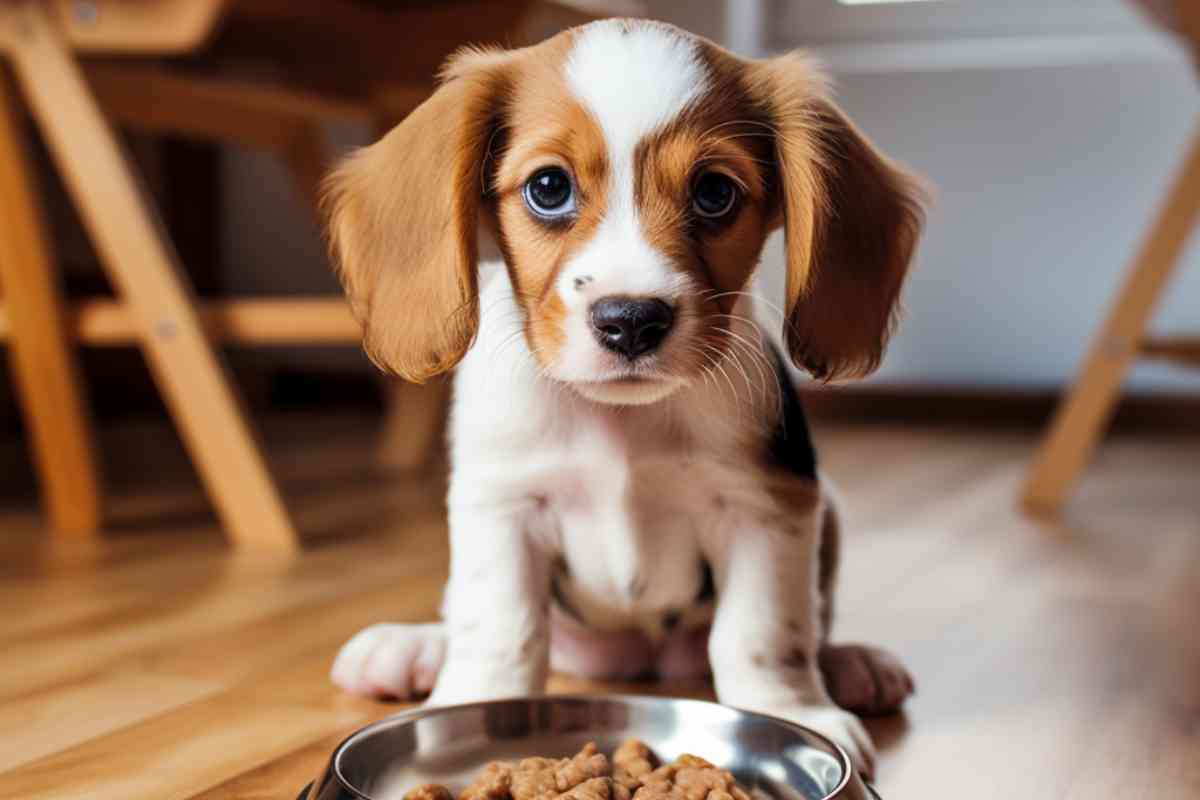
Transitioning Back to Regular Food
A chicken and rice diet should be temporary. It doesn’t contain all the nutrients your puppy needs for a balanced diet. After a few days, or when your puppy’s stomach upset has resolved, start transitioning back to their regular food. Replace a quarter or third of the chicken and rice with your puppy’s regular food, then increase the amount each day until your puppy is back on their normal diet.
This gradual transition is important to prevent further stomach upset. Suddenly switching back to regular food can be hard on your puppy’s stomach, potentially causing more digestive issues. By gradually reintroducing their regular food, you give your puppy’s digestive system time to adjust.
Commercial Chicken and Rice Dog Food
If you are looking for a convenient way to feed your puppy chicken and rice, there are many commercial dog food options available. These dog foods are formulated to provide complete and balanced nutrition for your pup while also being easy to prepare and serve.
One popular option is the Purina ONE SmartBlend Chicken and Rice Formula. This dog food contains real chicken as the first ingredient and is specially formulated for puppies. It provides a balanced blend of protein, fat, and carbohydrates to support your pup’s growth and development.
Another option is the Blue Buffalo Life Protection Chicken and Brown Rice Recipe. This dog food is made with real chicken and brown rice and is free from artificial preservatives, colors, and flavors. It also contains a blend of antioxidants, vitamins, and minerals to support your puppy’s immune system and overall health.
If you prefer to shop on Amazon, there are many chicken and rice dog food options available. Simply search for “chicken and rice puppy food” to find a variety of options at different price points.
When choosing a commercial dog food, be sure to read the label carefully and choose one that is appropriate for your puppy’s age, breed, and size. You should also consult with your veterinarian to ensure that the dog food you choose meets your puppy’s specific nutritional needs.
| Brand | Protein Source | Grain Source | Price |
|---|---|---|---|
| Purina ONE SmartBlend Chicken and Rice Formula | Real chicken | Rice flour, corn gluten meal | $ |
| Blue Buffalo Life Protection Chicken and Brown Rice Recipe | Real chicken | Brown rice | $$ |
| Hill’s Science Diet Puppy Chicken and Brown Rice Recipe | Real chicken | Brown rice, barley | $$$ |
Note: Prices are approximate and may vary depending on location and retailer.
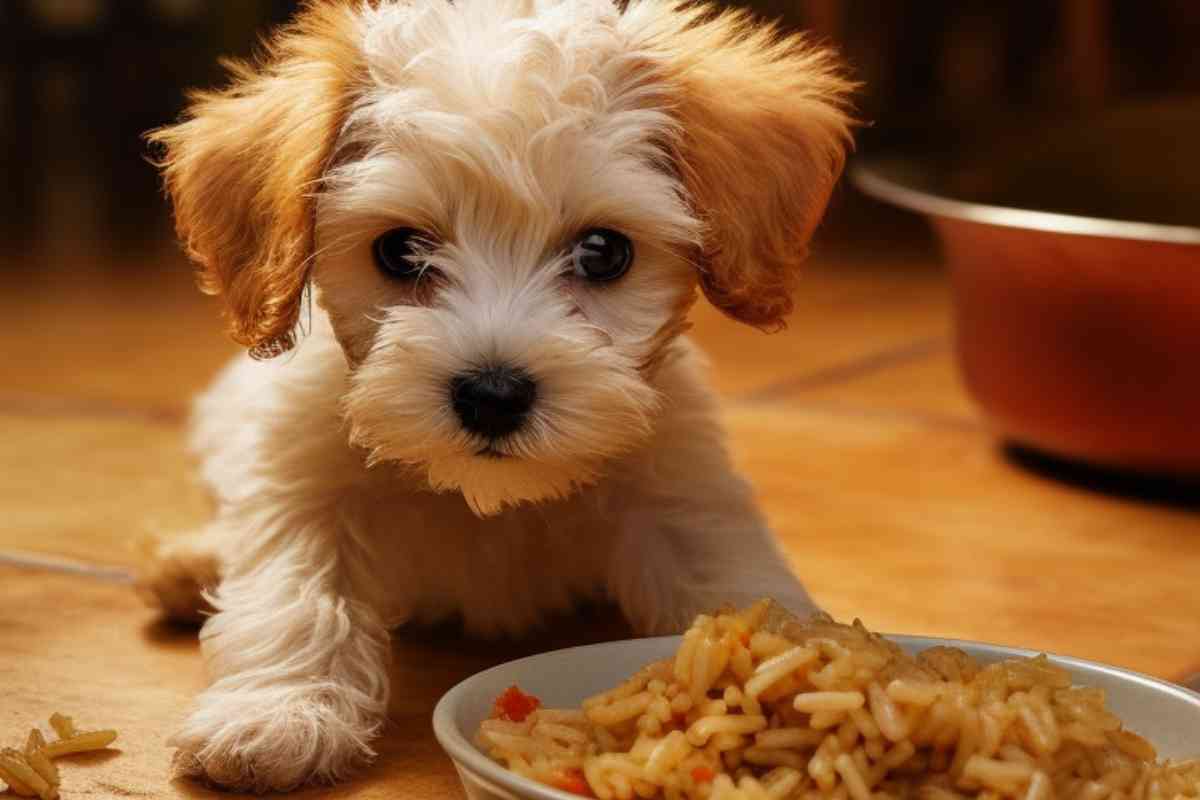
Potential Health Concerns
While chicken and rice can be a great option for puppies who are experiencing stomach issues such as diarrhea or vomiting, there are some potential health concerns to keep in mind.
Firstly, it is important to note that chicken and rice should not be the sole diet for puppies. While it can be a great temporary solution for upset stomachs, puppies require a balanced diet that includes all necessary nutrients.
Additionally, some puppies may have allergies to chicken or rice, which can cause further digestive issues. Chicken is one of the most common allergens for dogs. It is important to monitor your puppy closely for any signs of allergies or sensitivity to the food.
Another potential concern with feeding puppies chicken and rice is constipation. Rice is a low-fiber food that can cause constipation if fed in excessive amounts. It is important to ensure that your puppy is getting enough fiber in their diet to prevent constipation.
Lastly, while chicken and rice can be a great temporary solution for stomach issues, if your puppy’s symptoms persist for more than a few days, it is important to seek veterinary care. Prolonged diarrhea or vomiting can lead to dehydration and other health issues.
Related Posts:
Alternatives to Chicken and Rice
While chicken and rice are a popular choice for feeding puppies, there are other options that can be just as effective. Below are some alternatives to chicken and rice that you can consider:
1. Baby Food
Baby food is designed to be easy to digest, making it a good option for dogs with upset stomachs. It’s also often more palatable to dogs, which can help encourage eating in a dog with a reduced appetite. When choosing baby food, opt for purees that contain only simple, dog-safe ingredients, like chicken or turkey. Avoid any that contain onions, garlic, or other ingredients that are toxic to dogs. To feed, you can offer a small amount on a spoon or mix it into their regular food.
2. Bone Broth
Bone broth is a nutrient-rich liquid that can be a good option for dogs who are struggling to eat solid food. It’s packed with beneficial compounds like collagen, glutamine, and glycine, which can help support gut health and reduce inflammation. To feed, you can offer it to your dog in a bowl, or use it to moisten their regular food to make it more palatable.
3. Pumpkin
Pumpkin is high in fiber, which can help regulate the digestive system. It’s also rich in vitamins and minerals, making it a nutritious addition to your dog’s diet. When feeding pumpkin, make sure to use plain, canned pumpkin, not pumpkin pie filling, which contains added sugars and spices. You can mix a tablespoon or two into your dog’s regular food.
4. Oatmeal
Oatmeal is a great alternative to rice as it is easy to digest and contains many essential nutrients. It is also a good source of fiber, which can help regulate your puppy’s digestive system. You can mix cooked oatmeal with a protein source like chicken or beef to create a well-rounded meal for your puppy.
5. Gluten-Free Options
If your puppy has a gluten allergy or sensitivity, there are many gluten-free options available. You can try feeding your puppy quinoa, sweet potatoes, or brown rice pasta. Just make sure to check the labels and ingredients to ensure that the food is truly gluten-free.
Probiotics
Probiotics are beneficial bacteria that live in the digestive tract. They play a crucial role in maintaining a healthy gut environment, aiding in digestion, and supporting the immune system.
For puppies with tummy upset, probiotics can be particularly beneficial. They can help restore a healthy balance of gut bacteria, which can be disrupted by factors like illness, stress, or antibiotics. This can help alleviate symptoms like diarrhea, gas, and bloating.
Probiotics can also help strengthen the gut barrier, which prevents harmful bacteria and toxins from leaking out of the intestines and into the rest of the body. This can help reduce inflammation and promote overall gut health.
Cottage cheese can be beneficial for puppies with digestive issues in some cases. It’s a source of easily digestible protein and calcium as well as probiotics.
Yogurt is a good addition to a puppy’s diet, especially if they’re dealing with digestive issues. It’s rich in multiple probiotics, which are beneficial bacteria that can help support a healthy gut environment.
These probiotics can aid digestion and help maintain a balanced gut flora, which is particularly beneficial for puppies with upset stomachs.
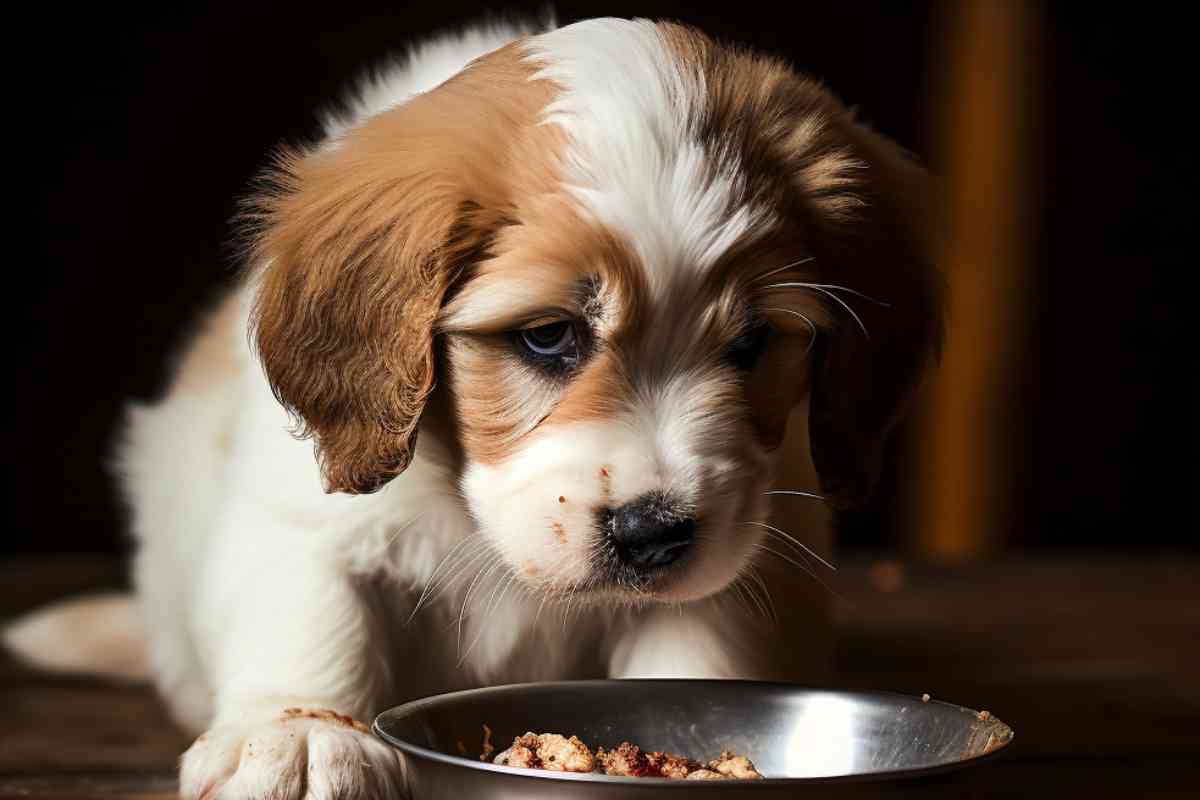
Stress and anxiety can also cause digestive upset in puppies, so be sure your dog isn’t stressed in addition to the stomach troubles. Separation anxiety, prevalent in people-loving breeds like Goldendoodles can often lead to stomach problems.
Frequently Asked Questions
How much cooked chicken should I feed my puppy daily?
The amount of cooked chicken that you should feed your puppy daily depends on their age, weight, and activity level. As a general rule, puppies should eat about 1/4 to 1/3 cup of cooked chicken per meal, two to three times a day. However, it’s essential to consult with your veterinarian to determine the appropriate amount for your puppy.
What is the recommended daily amount of rice for a puppy?
The recommended daily amount of rice for a puppy is about 1/4 to 1/2 cup of cooked rice per meal, two to three times a day. Like with the chicken, the amount of rice your puppy needs will depend on their age, weight, and activity level. Always consult with your veterinarian to determine the appropriate amount for your puppy.
How do I transition my puppy from chicken and rice to regular dog food?
Transitioning your puppy from chicken and rice to regular dog food should be done gradually over a period of 7-10 days. Start by mixing a small amount of the new dog food with the chicken and rice mixture, gradually increasing the amount of dog food and decreasing the amount of chicken and rice each day until your puppy is eating only the new dog food.
Is it safe to feed my puppy chicken and rice every day?
While chicken and rice is a healthy and nutritious meal for puppies, it should not be the only food they eat every day. Puppies need a balanced diet that includes protein, carbohydrates, fats, vitamins, and minerals. Consult with your veterinarian to determine the appropriate diet for your puppy.
What is the appropriate amount of chicken to feed a puppy based on their weight?
The appropriate amount of chicken to feed a puppy based on their weight is about 1 ounce of chicken per pound of body weight per day. For example, if your puppy weighs 10 pounds, they should eat approximately 10 ounces of chicken per day. Again, consult with your veterinarian to determine the appropriate amount for your puppy.
How much chicken and rice should I give my puppy if they have an upset stomach?
If your puppy has an upset stomach, chicken and rice is a great meal option. The recommended ratio of chicken to rice is 1-to-2. For example, if you are giving your puppy one cup of food, two-thirds should be rice, and one-third should be chicken. Feed your puppy small amounts of this mixture throughout the day until their stool returns to normal. Consult with your veterinarian if their symptoms persist.